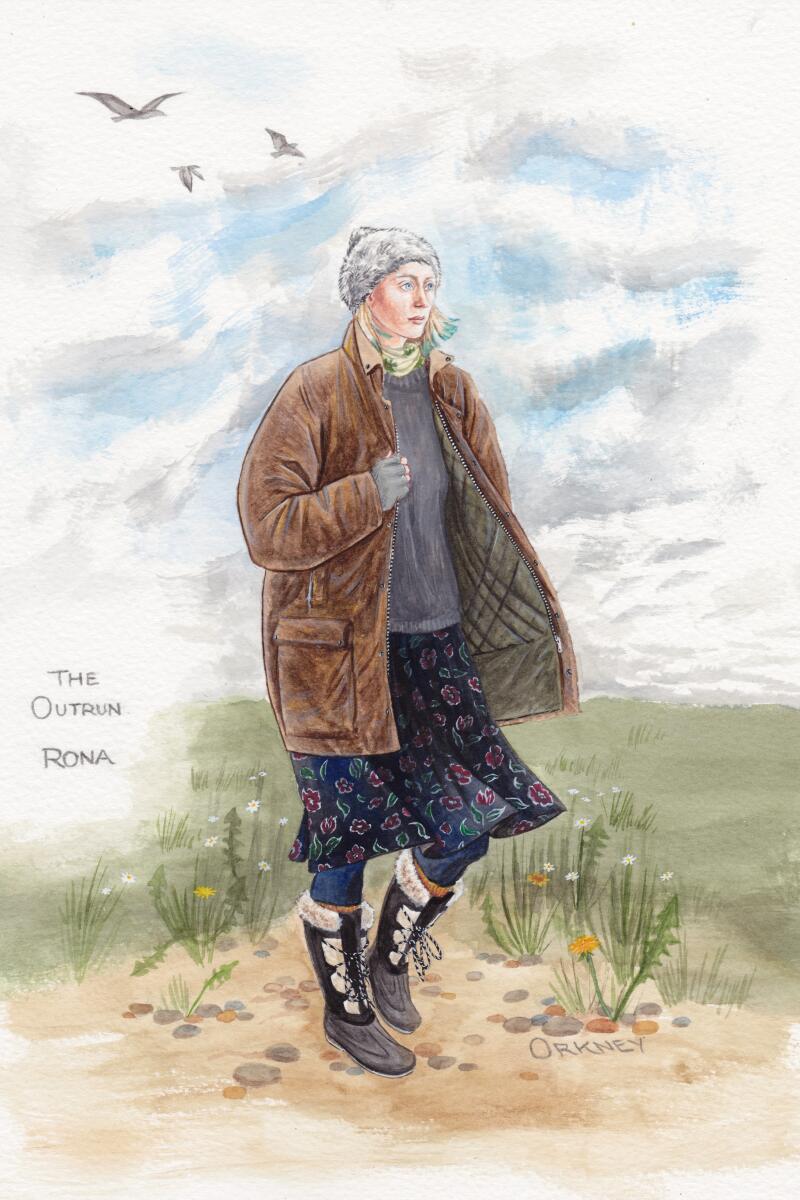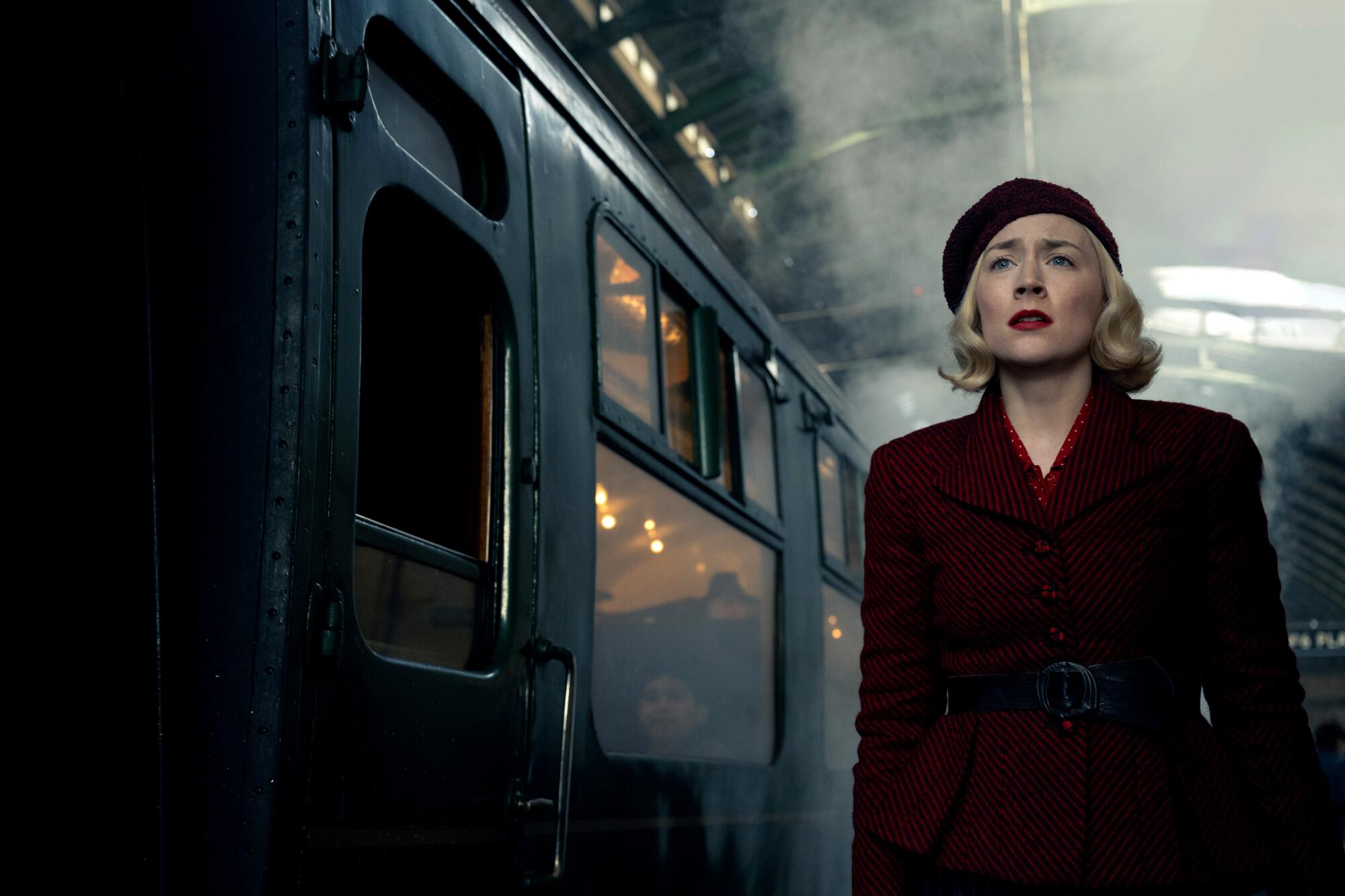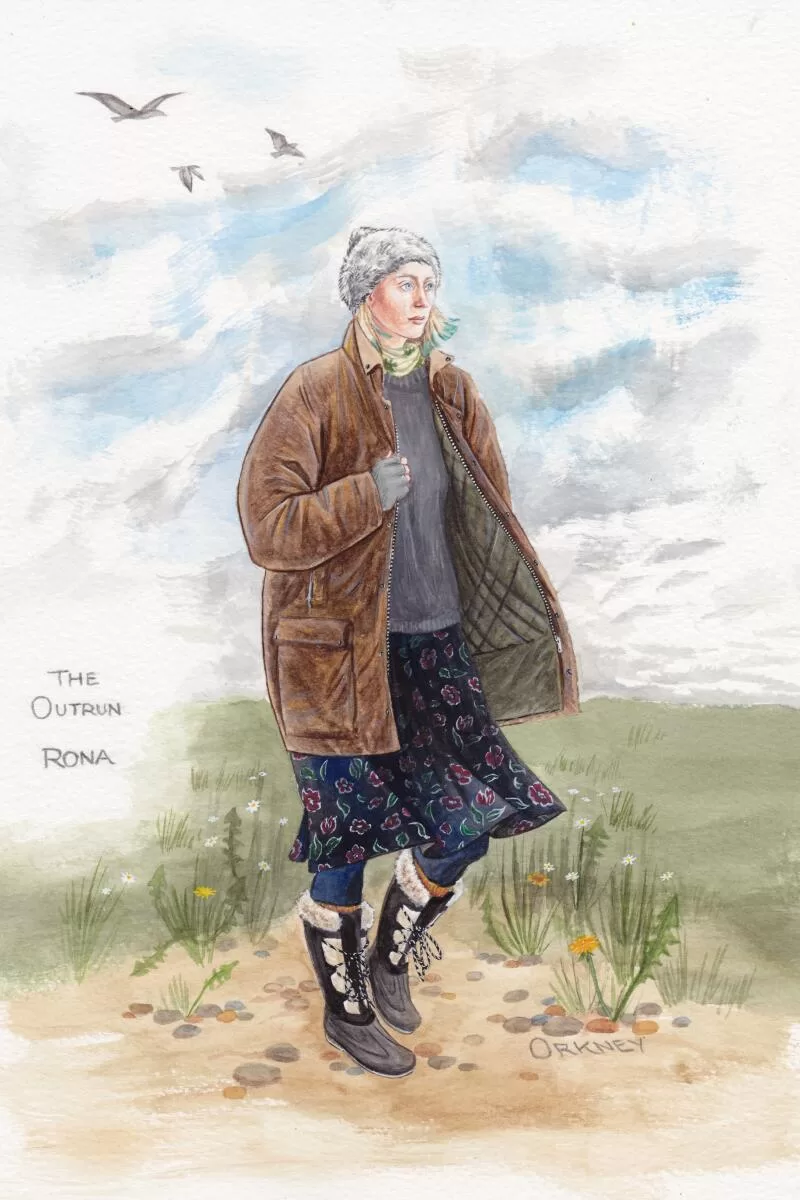No matter the century, Saoirse Ronan is going to dance. When the four-time Academy Award nominee moves to the music in her two films this season, the fabric of a blue-striped dress or a vintage silk black top with a rose print becomes one with the choreography. Despite being set more than 70 years apart, London nightlife scenes in the World War II drama “Blitz” and “The Outrun’s” 21st century tale of alcoholism and recovery each display a 1930s influence.
In “The Outrun,” adapted by director Nora Fingscheidt from Amy Liptrot’s 2016 memoir of the same name, Rona is a fictional version of the author. Charting a decade or so of Rona’s life, Ronan (who also produced the film) has around 80 costume changes, from carefree partying and the subsequent spiral in Hackney to practical outerwear after moving home to the remote Orkney Islands as part of her sobriety journey. In Steve McQueen’s big-budget “Blitz,” Ronan plays resilient single mother Rita, whose 9-year-old son, George, goes missing from an evacuation train to the countryside. Like many other Londoners, Rita kept up appearances during the war.
Here, costume designers Grace Snell and Jacqueline Durran discuss how the locations and turbulence in each story inform the vibrant looks.
For the first “Outrun” fitting, Snell arrived at Ronan’s home with five suitcases of options, including a garment steeped in personal history. “This silk vest I have had for as long as I can remember in my adult life. It was given to me by my auntie,” says Snell. “It was made by my nanny in the ’80s. They’d found a piece of fabric in a jumble sale together. It’s a 1930s piece of fabric.” Snell’s aunt wore it “during her Bananarama phase,” and in the late 2000s the costume designer partied in London nightclubs wearing the same rose top. Next up, Rona.
1

2

1. The look costume designer Grace Snell created for the character’s sobriety journey in nature for “The Outrun.” (Apple) 2. Snell chose a vintage tank for Soairse Ronan’s partying days in “The Outrun.” (Apple)
Ahead of nature becoming a lifesaver back home on the Scottish island, florals hold significance in the city. Rona wears the ’30s silk tank when a dreamy summer day morphs into first kisses at a nightclub — before benders and breakups. “I think it was one of our first costumes that Saoirse and I were like, ‘This is it!’” Snell says. It was easy to envision its impact as “The Outrun’s” hair and makeup designer, Kat Morgan, had dyed Ronan’s hair a bold shade for the first fitting. “With the turquoise hair, I thought a monochromatic top would work brilliantly,” Snell says. In the dark nightclub, the top isn’t trying to pull focus: “It’s her face that is illuminated.”
A cozy black hoodie with a white unicorn (coincidentally, Scotland’s national animal) graphic “ties in with the myth and legend elements of the film,” appearing at low points in both locations. “You have a London wardrobe, an Orkney wardrobe, and then a crossover of a few bits that bounce around,” Snell says.
Snell pulled a coat from her father’s closet that Rona wears back home and the designer borrowed from Orkney residents: “Rona’s wellies were given to us by one of the women on the farm, and I bought her a new pair as a thank-you.” No need to walk around muddy fields for authenticity: “That’s real sheep poo.” “It was important to me that lots of the clothes were lived and worn in; clothes that people have experienced wearing in those environments,” adds Snell. Overalls, oversize knits and a faux fur hat that Snell sourced but didn’t end up using for the Tilda Swinton movie “The Eternal Daughter” are part of Rona’s contrasting rural aesthetic.
Like Rona, Rita experiences bliss on the dance floor in “Blitz.” For this pivotal, joyous moment with boyfriend Marcus (CJ Beckford), before prejudice and then war tear her family apart, Rita’s striped blue frock with a shorter hemline is typical of late ’20s-early ’30s trends: “We copied it from an original, and it was very fitted from the waist over the upper hip, and then it flared so it was good for dancing.”
Rita’s dedication to looking her best in the present, whether at work in the munitions factory or going on a night out wearing a leopard-print coat, is inspired by photographic evidence. “It was almost part of the war effort to keep the front up, to keep your appearance together as much as you could, to keep morale high,” says Durran. “Putting your best foot forward even though it’s the war.”
“Blitz” is Durran’s fourth collaboration with Ronan across 17 years since they first worked together on “Atonement.” The nine-time Oscar nominee (Durran won for “Little Women” and “Anna Karenina”) observes that Ronan “has become one of our greatest movie stars,” and a showstopping “highly tailored, bold jacket” reflects the cultural status. Inspiration from adventurous late-’30s silhouettes makes Rita stand out at the train station in a sea of children ready to evacuate. “I think that’s part of movie storytelling, but I also was very conscious that I didn’t want it to be unbelievable, even though it looks like an extraordinarily big statement,” Durran says.

Costume designer Jacqueline Durran found not everything was drab during the Blitz, red was also “in the fashion ether at the time.”
(Parisa Taghizdeh/Apple)
Far from all Londoners falling back on dull neutrals, Durran found red was “in the fashion ether at the time”; makeup designer Naomi Donne also goes crimson for Rita’s lipstick. While the diagonal-striped jacket and skirt are custom-built, the contrasting red polka-dot blouse and shoes are vintage. Durran pushed the period-accurate look “a touch” but didn’t want to lean too glam with Rita’s headwear. “We did try some other more classic ’40s hats on,” she says. “Because we were already doing the red jacket, I wanted to play the hat down a bit.” Crochet provided the solution: “I went for a hat that felt like you could make at home.”
Using patterns from the era, “Lots of the headscarves in the factory were also crocheted.” These details show East End women “still express themselves” even in an expected uniform environment. The same applies whether on the bus, sheltering in a tube station or sorting through the rubble. “It was about London and the multiplicity of people and realities that are there,” Durran says. “I always felt that with Rita, or with any of the principals, you were just zooming in on one aspect of life in London at that moment, of which there were millions of versions.”
Depictions of the U.K. capital wildly differ in the Ronan double bill. Yet flashbacks highlight a sartorial connection within the cityscape Rita and Rona inhabit before one leaves the metropolis behind.
